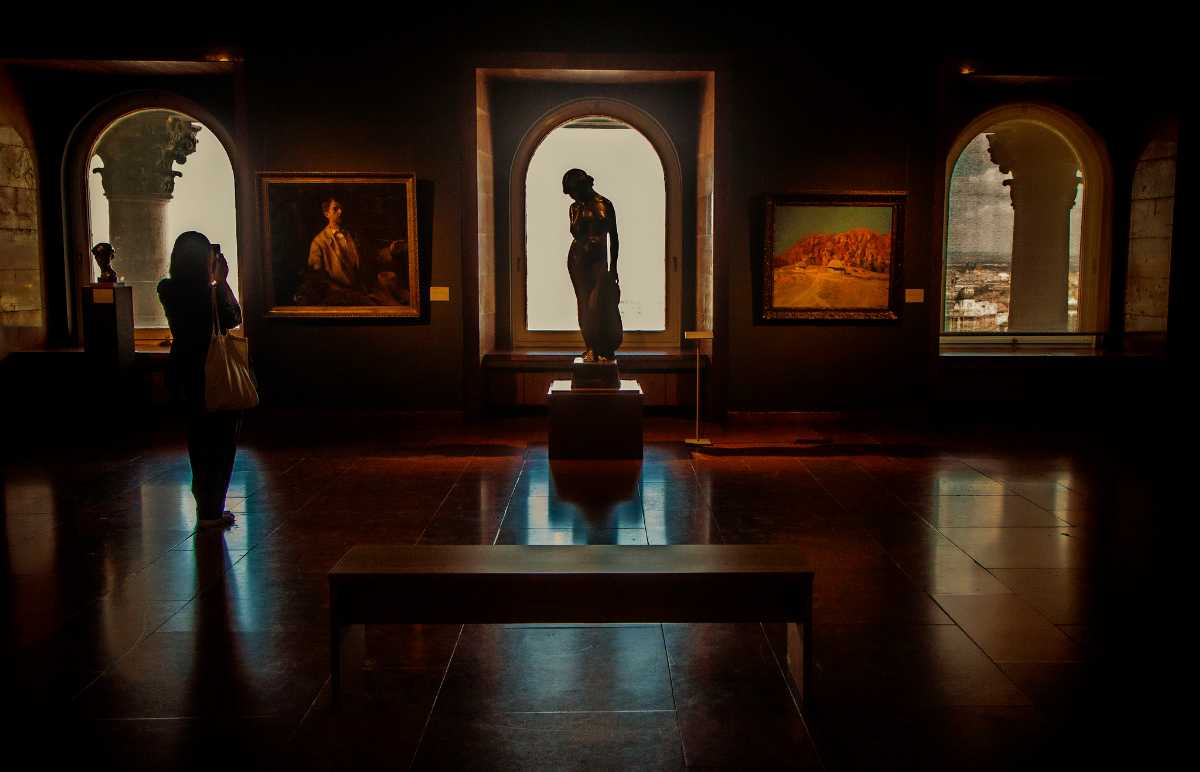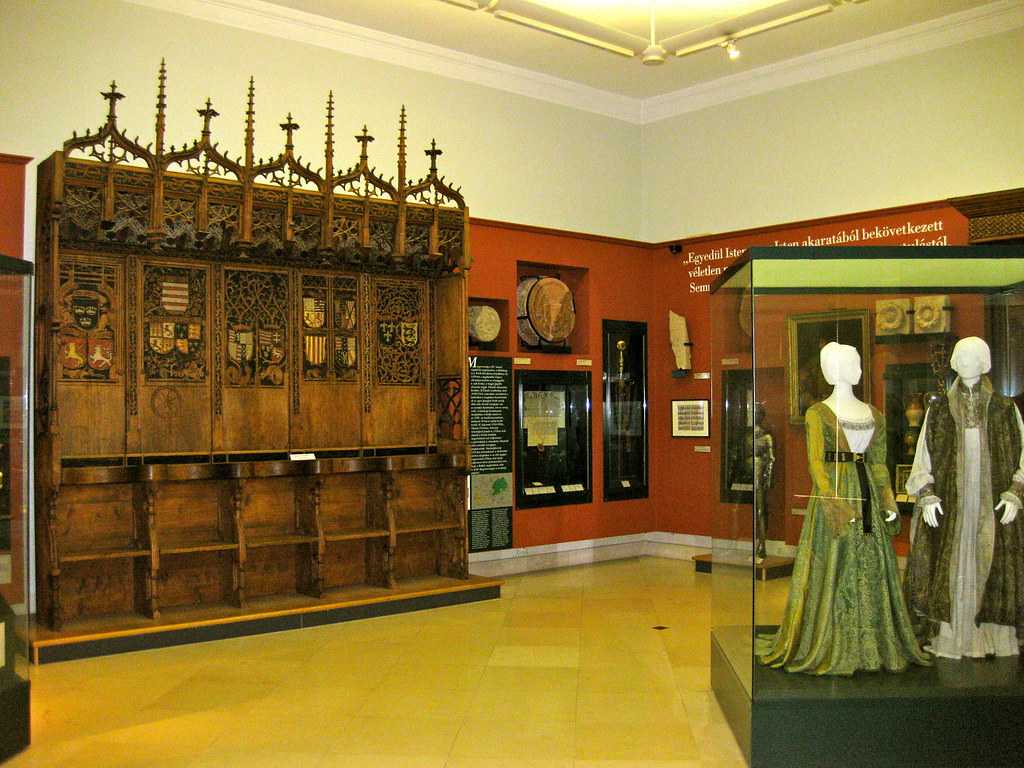Hungarian National Museum
₹ 672 onwards
View Budapest PackagesWeather :
Tags : Museum
Timings : Tuesday to Sunday: 10:00 AM – 6:00 PM
Monday: closed
Time Required : 2-3 hours
Entry Fee : Adults: 2,900 HUF
EU citizens (aged between 6 - 26 and from 62 -70): 1,450 HUF
Children less than 6 years old and Seniors over 70 years old: Free.
Budapest Card: Free.
Ways to Experience this attraction
Hungarian National Museum, Budapest Overview
The Hungarian National Museum is the national museum for history, art and archaeology of Hungary, located in an impressive neoclassical edifice. It is the oldest public museum in Hungary. It is an architectural masterpiece and a heaven for history and architecture buffs.
The construction and architectural design of the museum is attributed to the architect Mihaly Pollack. Dedicated to the history and art of Hungary, it stands as an epitome of Hungary's national identity, housing about one million historical relics from as early as prehistoric times to modern times. Founded about 200 years ago, the Hungarian National Museum exhibits furniture, textiles, weapons, metalwork, ceramics and one of the most valuable items, that is the Coronation Mantle. Besides eyeing the well laid out collections of the museum, one can also take a walk around the garden that surrounds it and take a look at the few statues and the pretty, old townhouses overlooking the garden.
Read More on Hungarian National Museum
Museum Layout
First Floor
The first floor of the museum is dedicated to the history of the Carpathian Basin as well as to the arrival of the Magyars in the 9th century.
Second Floor
On the second floor, one can find the exhibits related to the story of Magyars as well as relics from the conquest of the basin to the end of communism. All main collections can be found on the second floor, covering the time period 10th century which was the start of Arpad dynasty to 12th century which marked the end of communism. There are many rooms. The first 8 rooms has some impressive artifacts on display as well as the most precious crown of Constantine IX Monomachos, created in the 11th century. The other rooms cover the period from the Habsburg occupation to the Communist era.
The interiors of the museum are replete with marble pillars and beautiful paintings that adorn the walls and ceilings. The museum has a beautifully sculpted pediment and huge columns that gives it the appearance of a Roman temple.

Exhibitions at Hungarian National Museum
The museum covers the Hungarian history in two parts : first one covering prehistoric times to the Avar period towards the end of 804 AD and the second one covering the time from 804 AD to the modern times. The two are distinctly exhibited on two different floors of the building. The age of Arpads, long Turkish occupation, Transylvania and Royal Hungary are the ages covered in the exhibits.

The popular exhibits include Celtic gold and silver jewellery, a huge 2nd century Roman mosaic, the crimson silk coronation mantle of King St Stephen which has a whole room for it, a Broadway piano used by Beethoven and Liszt, memorabilia from the socialist times, the Coronation cloak used by the King of Hungary, a statue of a handmade golden deer from the 6th century BC, a funerary crown from the 13th century and several other relics. There are military attire and various coins relevant to Rakoczi War of Independence.
It must be noted that the ground floor of the building has exhibits highlighting the Medieval and Early Modern stone inscriptions and carvings. Another noteworthy exhibit is the Roman lapidary in the basement of the building, which is a collection of ancient Roman stone carvings and inscriptions.
History
Its collections grew after the 1807 Hungarian Parliament urged the nation to contribute and donate to the museum and after the 1832 Parliament voted for its reconstruction and hence the museum was constructed and architectured in a neoclassical style by Mihaly Pollack. The museum became a national identity of Hungary, because it played a role in the Hungarian Revolution as well. The Sandor Petofi's 12 points and the famous poem by Nemzeti dal on the front steps of the museum spurred the revolution. After the Hungarian Revolution, the statues of Janos Arany and Sandor Petofi was added in the museum.
Tips
- People with disabilities can enter the museum building from the staff entrance on its Brody Sandor utca side, where volunteers are available to assist them into the building and move around inside it. There are lavatory and baby changing facilities designed and available for them inside the building.
- Visually impaired people can visit the museum too because there are artefacts that can be touched and they are made available to the blind or otherwise visually impaired people. There is also the facility for using a social audio player in the archaeology section named On the Border of East and West.
- For the groups of visually impaired people the museum also provides guided tours at decent prices.
- On the left hand side of the lobby is the museum shop where one can buy porcelain souvenirs, museum object photos, historical maps, postcards, CDs etc.
- Another great attraction among them is the wide range of precious and non-precious metal jewellery.
How To Reach Hungarian National Museum
Parking: Car parking is not permitted for visits. Recommended parking place is the underground car park on Pollack Mihaly Ter.
Top Hotel Collections
Top Hotels Near Hungarian National Museum
Hungarian National Museum Reviews

Have a Question on Hungarian National Museum?

experience.